185 papers:
 CASE-2015-DeviNVKM #algorithm #implementation
CASE-2015-DeviNVKM #algorithm #implementation- E-mandi implementation based on gale-shapely algorithm for perishable goods supply chain (SPD, YN, NV, SVK, SM), pp. 1421–1426.
 DocEng-2015-CutterM #documentation #how #mobile #towards
DocEng-2015-CutterM #documentation #how #mobile #towards- Towards Mobile OCR: How to Take a Good Picture of a Document Without Sight (MPC, RM), pp. 75–84.
 ICALP-v2-2015-GiannakopoulosK
ICALP-v2-2015-GiannakopoulosK- Selling Two Goods Optimally (YG, EK), pp. 650–662.
 ICALP-v2-2015-KuperbergS #automaton #nondeterminism #on the
ICALP-v2-2015-KuperbergS #automaton #nondeterminism #on the- On Determinisation of Good-for-Games Automata (DK, MS), pp. 299–310.
 CHI-2015-KayPK #bibliography #classification #evaluation #how
CHI-2015-KayPK #bibliography #classification #evaluation #how- How Good is 85%?: A Survey Tool to Connect Classifier Evaluation to Acceptability of Accuracy (MK, SNP, JAK), pp. 347–356.
 CHI-2015-PritchardVO
CHI-2015-PritchardVO- Your Money’s No Good Here: The Elimination of Cash Payment on London Buses (GWP, JV, PO), pp. 907–916.
 CHI-2015-SkovJSL #monitoring
CHI-2015-SkovJSL #monitoring- No News is Good News: Remote Monitoring of Implantable Cardioverter-Defibrillator Patients (MBS, PGJ, CSS, AL), pp. 827–836.
 CSCW-2015-KumarS #facebook #privacy #women
CSCW-2015-KumarS #facebook #privacy #women- The Modern Day Baby Book: Enacting Good Mothering and Stewarding Privacy on Facebook (PK, SYS), pp. 1302–1312.
 CSCW-2015-LiZLDG #collaboration #editing #trade-off #wiki
CSCW-2015-LiZLDG #collaboration #editing #trade-off #wiki- Is It Good to Be Like Wikipedia?: Exploring the Trade-offs of Introducing Collaborative Editing Model to Q&A Sites (GL, HZ, TL, XD, NG), pp. 1080–1091.
 LCT-2015-KobanLO #game studies #video
LCT-2015-KobanLO #game studies #video- Good Newbie or Poor Newbie? Determinants of Video Game Skill Acquisition at an Early Stage (KK, BL, PO), pp. 608–619.
 ICEIS-v1-2015-JuniorS #approach #compilation #optimisation #reasoning #set
ICEIS-v1-2015-JuniorS #approach #compilation #optimisation #reasoning #set- Finding Good Compiler Optimization Sets — A Case-based Reasoning Approach (NLQJ, AFdS), pp. 504–515.
 ICML-2015-WuGS #combinator #feedback #finite #identification #on the
ICML-2015-WuGS #combinator #feedback #finite #identification #on the- On Identifying Good Options under Combinatorially Structured Feedback in Finite Noisy Environments (YW, AG, CS), pp. 1283–1291.
 KDD-2015-HohnholdOT
KDD-2015-HohnholdOT- Focusing on the Long-term: It’s Good for Users and Business (HH, DO, DT), pp. 1849–1858.
 RecSys-2015-LarrainTPGN #case study #collaboration #social
RecSys-2015-LarrainTPGN #case study #collaboration #social- Good Times Bad Times: A Study on Recency Effects in Collaborative Filtering for Social Tagging (SL, CT, DP, EGG, KN), pp. 269–272.
 ECOOP-2015-PradelS #empirical #javascript
ECOOP-2015-PradelS #empirical #javascript- The Good, the Bad, and the Ugly: An Empirical Study of Implicit Type Conversions in JavaScript (MP, KS), pp. 519–541.
 ICSE-v1-2015-LavalleeR #case study #developer #quality #why
ICSE-v1-2015-LavalleeR #case study #developer #quality #why- Why Good Developers Write Bad Code: An Observational Case Study of the Impacts of Organizational Factors on Software Quality (ML, PNR), pp. 677–687.
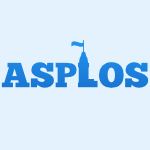 ASPLOS-2015-SridharanDBFSSG #fault #memory management
ASPLOS-2015-SridharanDBFSSG #fault #memory management- Memory Errors in Modern Systems: The Good, The Bad, and The Ugly (VS, ND, SB, KBF, JS, JS, SG), pp. 297–310.
 CAV-2015-GouwRBBH #java
CAV-2015-GouwRBBH #java- OpenJDK’s Java.utils.Collection.sort() Is Broken: The Good, the Bad and the Worst Case (SdG, JR, FSdB, RB, RH), pp. 273–289.
 LICS-2015-CarayolS #game studies #how #question
LICS-2015-CarayolS #game studies #how #question- How Good Is a Strategy in a Game with Nature? (AC, OS), pp. 609–620.
 DATE-2014-ShiC #named
DATE-2014-ShiC #named- Memcomputing: The cape of good hope: [Extended special session description] (YS, HMC), pp. 1–3.
 SIGMOD-2014-ParchasGPB #graph #nondeterminism
SIGMOD-2014-ParchasGPB #graph #nondeterminism- The pursuit of a good possible world: extracting representative instances of uncertain graphs (PP, FG, DP, FB), pp. 967–978.
 PLDI-2014-Palem #question #what
PLDI-2014-Palem #question #what- What exactly is inexact computation good for? (KVP), p. 1.
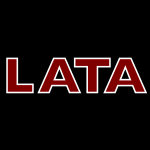 LATA-2014-KleinMBK #automaton #model checking #probability #question
LATA-2014-KleinMBK #automaton #model checking #probability #question- Are Good-for-Games Automata Good for Probabilistic Model Checking? (JK, DM, CB, SK), pp. 453–465.
 CHI-2014-AhmaniemiKH #gesture #question #what
CHI-2014-AhmaniemiKH #gesture #question #what- What is a device bend gesture really good for? (TTA, JK, MH), pp. 3503–3512.
 CHI-2014-Wohn #game studies #online #social
CHI-2014-Wohn #game studies #online #social- Spending real money: purchasing patterns of virtual goods in an online social game (DYW), pp. 3359–3368.
 HCI-AS-2014-LandyLNPLM #analysis #comparative #development #predict
HCI-AS-2014-LandyLNPLM #analysis #comparative #development #predict- Finding Directions to a Good GPS System — A Comparative Analysis and Development of a Predictive Model (JL, TL, NN, PP, EL, PM), pp. 454–465.
 HIMI-DE-2014-ShiozuKYS #question
HIMI-DE-2014-ShiozuKYS #question- Does ICT Promote the Private Provision of Local Public Goods? (YS, KK, KY, KS), pp. 629–640.
 KDD-2014-Eagle #big data #social
KDD-2014-Eagle #big data #social- Big data for social good (NE), p. 1522.
 KDD-2014-PapalexakisFSTMF #algorithm #challenge #multi
KDD-2014-PapalexakisFSTMF #algorithm #challenge #multi- Good-enough brain model: challenges, algorithms and discoveries in multi-subject experiments (EEP, AF, NDS, PPT, TMM, CF), pp. 95–104.
 KDD-2014-RamakrishnanW #privacy #question #social
KDD-2014-RamakrishnanW #privacy #question #social- Does social good justify risking personal privacy? (RR, GIW), p. 1965.
 KDD-2014-XuWCGSKDL #data mining #mining #network #social
KDD-2014-XuWCGSKDL #data mining #mining #network #social- Improving management of aquatic invasions by integrating shipping network, ecological, and environmental data: data mining for social good (JX, TLW, NVC, EKG, KS, RPK, JMD, DML), pp. 1699–1708.
 KDIR-2014-SuciuICDP #learning #word
KDIR-2014-SuciuICDP #learning #word- Learning Good Opinions from Just Two Words Is Not Bad (DAS, VVI, ACC, MD, RP), pp. 233–241.
 KDIR-2014-SzejdaSC #question #wiki
KDIR-2014-SzejdaSC #question #wiki- Does a “Renaissance Man” Create Good Wikipedia Articles? (JS, MS, DC), pp. 425–430.
 SIGIR-2014-ArkhipovaG #mobile #performance #web
SIGIR-2014-ArkhipovaG #mobile #performance #web- Evaluating mobile web search performance by taking good abandonment into account (OA, LG), pp. 1043–1046.
 PPoPP-2014-AgrawalFSSU #data type #parallel #scheduling #source code
PPoPP-2014-AgrawalFSSU #data type #parallel #scheduling #source code- Provably good scheduling for parallel programs that use data structures through implicit batching (KA, JTF, BS, JS, RU), pp. 389–390.
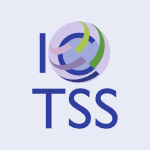 ICTSS-2014-Deak #bibliography #testing #what
ICTSS-2014-Deak #bibliography #testing #what- What Characterizes a Good Software Tester? — A Survey in Four Norwegian Companies (AD), pp. 161–172.
 ASE-2013-VeerappaH #approach #maturity #requirements
ASE-2013-VeerappaH #approach #maturity #requirements- Assessing the maturity of requirements through argumentation: A good enough approach (VV, RH), pp. 670–675.
 ICSM-2013-Yamashita #case study #comparative #how #maintenance #smell
ICSM-2013-Yamashita #case study #comparative #how #maintenance #smell- How Good Are Code Smells for Evaluating Software Maintainability? Results from a Comparative Case Study (AY), pp. 566–571.
 ICEIS-v2-2013-OBrienSH #framework #quality
ICEIS-v2-2013-OBrienSH #framework #quality- The Value of Good Data — A Quality Perspective — A Framework for Discussion (TO, AS, MH), pp. 555–562.
 KDD-2013-Ghani #scalability #social
KDD-2013-Ghani #scalability #social- Targeting and influencing at scale: from presidential elections to social good (RG), p. 1137.
 RE-2013-Gorschek #requirements
RE-2013-Gorschek #requirements- A little rebellion now and then is a good thing: Views on the requirements engineering conference (TG), pp. 357–360.
 ESEC-FSE-2013-Terekhov
ESEC-FSE-2013-Terekhov- Good technology makes the difficult task easy (AT), pp. 683–686.
 ICSE-2013-PolikarpovaF0WM #question #specification #what
ICSE-2013-PolikarpovaF0WM #question #specification #what- What good are strong specifications? (NP, CAF, YP, YW, BM), pp. 262–271.
 SLE-2013-BaggeH #pipes and filters #pretty-printing
SLE-2013-BaggeH #pipes and filters #pretty-printing- A Pretty Good Formatting Pipeline (AHB, TH), pp. 177–196.
 DAC-2012-Gester0NPSV #algorithm #data type #performance
DAC-2012-Gester0NPSV #algorithm #data type #performance- Algorithms and data structures for fast and good VLSI routing (MG, DM, TN, CP, CS, JV), pp. 459–464.
 DAC-2012-Rinard #reasoning
DAC-2012-Rinard #reasoning- Obtaining and reasoning about good enough software (MCR), pp. 930–935.
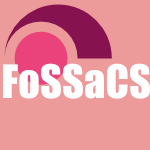 FoSSaCS-2012-PetersN #encoding #question
FoSSaCS-2012-PetersN #encoding #question- Is It a “Good” Encoding of Mixed Choice? (KP, UN), pp. 210–224.
 ICSM-2012-NasehiSMB #case study #programming #stack overflow #what
ICSM-2012-NasehiSMB #case study #programming #stack overflow #what- What makes a good code example?: A study of programming Q&A in StackOverflow (SMN, JS, FM, CB), pp. 25–34.
 STOC-2012-KaufmanL #graph #symmetry #transitive
STOC-2012-KaufmanL #graph #symmetry #transitive- Edge transitive ramanujan graphs and symmetric LDPC good codes (TK, AL), pp. 359–366.
 CHI-2012-KleekSSs #game studies #named #twitter
CHI-2012-KleekSSs #game studies #named #twitter- Twiage: a game for finding good advice on twitter (MVK, DAS, RS, MMCS), pp. 889–898.
 ECIR-2012-NeumayerBN12a #effectiveness #semantics
ECIR-2012-NeumayerBN12a #effectiveness #semantics- When Simple is (more than) Good Enough: Effective Semantic Search with (almost) no Semantics (RN, KB, KN), pp. 540–543.
 KDD-2012-GleichS #community
KDD-2012-GleichS #community- Vertex neighborhoods, low conductance cuts, and good seeds for local community methods (DFG, CS), pp. 597–605.
 HPDC-2012-Budiu #artificial reality #big data #framework
HPDC-2012-Budiu #artificial reality #big data #framework- Putting a “big-data” platform to good use: training kinect (MB), pp. 1–2.
 QoSA-ISARCS-2011-Stal #architecture
QoSA-ISARCS-2011-Stal #architecture- Good is not good enough: evaluating and improving software architecture (MS), pp. 73–74.
 ITiCSE-2011-Connolly11a #component #education #social
ITiCSE-2011-Connolly11a #component #education #social- Beyond good and evil impacts: rethinking the social issues components in our computing curricula (RWC), pp. 228–232.
 ITiCSE-2011-Goldweber11a #learning #social
ITiCSE-2011-Goldweber11a #learning #social- Computing for the social good: a service learning project (MG), p. 379.
 ICSM-2011-OssherSL #java #open source
ICSM-2011-OssherSL #java #open source- File cloning in open source Java projects: The good, the bad, and the ugly (JO, HS, CVL), pp. 283–292.
 CHI-2011-Fallman #human-computer #interactive
CHI-2011-Fallman #human-computer #interactive- The new good: exploring the potential of philosophy of technology to contribute to human-computer interaction (DF), pp. 1051–1060.
 CIKM-2011-ElsayedLM #approximate #performance #retrieval
CIKM-2011-ElsayedLM #approximate #performance #retrieval- When close enough is good enough: approximate positional indexes for efficient ranked retrieval (TE, JJL, DM), pp. 1993–1996.
 CIKM-2011-LoumakisSG #image #smell
CIKM-2011-LoumakisSG #image #smell- This image smells good: effects of image information scent in search engine results pages (FL, SS, DG), pp. 475–484.
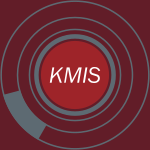 KMIS-2011-Grim-YefsahRT #information management #outsourcing
KMIS-2011-Grim-YefsahRT #information management #outsourcing- Changing Provider in an Outsourced Information System Project — Good Practices for Knowledge Transfer (MGY, CRS, VTG), pp. 318–321.
 SAC-2011-MajchrzakH #game studies
SAC-2011-MajchrzakH #game studies- Game vendors’ influence on the monetary value of virtual goods (TAM, KFH), pp. 757–764.
 LICS-2011-MurawskiT #game studies #semantics
LICS-2011-MurawskiT #game studies #semantics- Game Semantics for Good General References (ASM, NT), pp. 75–84.
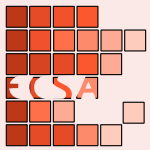 ECSA-2010-Kruchten #architecture #question
ECSA-2010-Kruchten #architecture #question- Where Did All This Good Architectural Knowledge Go? (PK), pp. 5–6.
 QoSA-2010-GloahecFS #architecture
QoSA-2010-GloahecFS #architecture- Good Architecture = Good (ADL + Practices) (VLG, RF, SS), pp. 167–182.
 HT-2010-KleinSN #question
HT-2010-KleinSN #question- Is this a good title? (MK, JLS, MLN), pp. 3–12.
 SCAM-2010-KesterMB #concurrent #debugging #how #question #static analysis
SCAM-2010-KesterMB #concurrent #debugging #how #question #static analysis- How Good is Static Analysis at Finding Concurrency Bugs? (DK, MM, JSB), pp. 115–124.
 ICPR-2010-GuoC10a #constraints
ICPR-2010-GuoC10a #constraints- Triangle-Constraint for Finding More Good Features (XG, XC), pp. 1393–1396.
 ICPR-2010-WuBT #image #predict
ICPR-2010-WuBT #image #predict- The Good, the Bad, and the Ugly: Predicting Aesthetic Image Labels (YW, CB, CT), pp. 1586–1589.
 SEKE-2010-TibermacineSGFS #automation #evolution #towards
SEKE-2010-TibermacineSGFS #automation #evolution #towards- Towards an Automation of Software Evolution Good Practices (CT, SS, VLG, RF, SS), pp. 339–344.
 SIGIR-2010-BuscherDC #quality #random #web
SIGIR-2010-BuscherDC #quality #random #web- The good, the bad, and the random: an eye-tracking study of ad quality in web search (GB, STD, EC), pp. 42–49.
 SIGIR-2010-SvoreKK #how #proximity #retrieval #web
SIGIR-2010-SvoreKK #how #proximity #retrieval #web- How good is a span of terms?: exploiting proximity to improve web retrieval (KMS, PHK, NK), pp. 154–161.
 ECMFA-2010-Corcoran #case study #development #experience #modelling #scalability
ECMFA-2010-Corcoran #case study #development #experience #modelling #scalability- The Good, the Bad and the Ugly: Experiences with Model Driven Development in Large Scale Projects at Ericsson (DC), p. 2.
 OOPSLA-2010-QuillienW #agile
OOPSLA-2010-QuillienW #agile- Rubber ducks, nightmares, and unsaturated predicates: proto-scientific schemata are good for agile (JQ, DW), pp. 901–917.
 DAC-2009-FengZYTZ #algorithm #performance
DAC-2009-FengZYTZ #algorithm #performance- Provably good and practically efficient algorithms for CMP dummy fill (CF, HZ, CY, JT, XZ), pp. 539–544.
 SIGMOD-2009-LiuJ #named
SIGMOD-2009-LiuJ #named- DataLens: making a good first impression (BL, HVJ), pp. 1115–1118.
 HCI-NT-2009-LeeLS #design
HCI-NT-2009-LeeLS #design- Brain Response to Good and Bad Design (HL, JL, SS), pp. 111–120.
 HCI-NT-2009-LiuUC #3d #classification #interface
HCI-NT-2009-LiuUC #3d #classification #interface- Goods-Finding and Orientation in the Elderly on 3D Virtual Store Interface: The Impact of Classification and Landmarks (CLL, STU, CHC), pp. 474–483.
 OCSC-2009-CindioP #community #online #question
OCSC-2009-CindioP #community #online #question- Are Online Communities Good for the Civic Audit of Public Spaces, Services, and Officers? (FdC, CP), pp. 673–681.
 CIKM-2009-HeO #documentation #feedback
CIKM-2009-HeO #documentation #feedback- Finding good feedback documents (BH, IO), pp. 2011–2014.
 ICML-2009-DekelS #education
ICML-2009-DekelS #education- Good learners for evil teachers (OD, OS), pp. 233–240.
 SEKE-2009-ChangL #design
SEKE-2009-ChangL #design- Supporting Good Decision Making at Early Stage of Software Design (HFC, SCYL), pp. 493–498.
 SIGIR-2009-LiHT #internet #mobile
SIGIR-2009-LiHT #internet #mobile- Good abandonment in mobile and PC internet search (JL, SBH, AT), pp. 43–50.
 OOPSLA-2009-Mullen #design #people
OOPSLA-2009-Mullen #design #people- Writing code for other people: cognitive psychology and the fundamentals of good software design principles (TM), pp. 481–492.
 SAT-2009-CreignouDER #comprehension
SAT-2009-CreignouDER #comprehension- (1, 2)-QSAT: A Good Candidate for Understanding Phase Transitions Mechanisms (NC, HD, UE, RR), pp. 363–376.
 ASE-2008-Eltaher #approach #testing #towards
ASE-2008-Eltaher #approach #testing #towards- Towards Good Enough Testing: A Cognitive-Oriented Approach Applied to Infotainment Systems (AE), pp. 525–528.
 CAiSE-2008-VanderfeestenRMAC #metric #modelling #on the #process
CAiSE-2008-VanderfeestenRMAC #metric #modelling #on the #process- On a Quest for Good Process Models: The Cross-Connectivity Metric (ITPV, HAR, JM, WMPvdA, JC), pp. 480–494.
 ECIR-2008-Mizzaro #evaluation #information retrieval #question
ECIR-2008-Mizzaro #evaluation #information retrieval #question- The Good, the Bad, the Difficult, and the Easy: Something Wrong with Information Retrieval Evaluation? (SM), pp. 642–646.
 SIGIR-2008-Al-MaskariSCA #effectiveness #predict #question
SIGIR-2008-Al-MaskariSCA #effectiveness #predict #question- The good and the bad system: does the test collection predict users’ effectiveness? (AAM, MS, PDC, EA), pp. 59–66.
 SIGIR-2008-CaoNGR #feedback #pseudo
SIGIR-2008-CaoNGR #feedback #pseudo- Selecting good expansion terms for pseudo-relevance feedback (GC, JYN, JG, SR), pp. 243–250.
 SIGIR-2008-SmithK #adaptation
SIGIR-2008-SmithK #adaptation- User adaptation: good results from poor systems (CLS, PBK), pp. 147–154.
 SAC-2008-BazzanSDB #contest #game studies
SAC-2008-BazzanSDB #contest #game studies- Emerging cooperation in a public goods game with competition (ALCB, RdS, SRD, ATB), pp. 8–12.
 SAC-2008-FariaM #recognition #scalability #speech
SAC-2008-FariaM #recognition #scalability #speech- When a mismatch can be good: large vocabulary speech recognition trained with idealized tandem features (AF, NM), pp. 1574–1577.
 FSE-2008-BettenburgJSWPZ #debugging #question #what
FSE-2008-BettenburgJSWPZ #debugging #question #what- What makes a good bug report? (NB, SJ, AS, CW, RP, TZ), pp. 308–318.
 DAC-2007-LiuLC #algorithm #approximate #multi #optimisation #using
DAC-2007-LiuLC #algorithm #approximate #multi #optimisation #using- A Provably Good Approximation Algorithm for Power Optimization Using Multiple Supply Voltages (HYL, WPL, YWC), pp. 887–890.
 CSEET-2007-WilliamsL #question #why
CSEET-2007-WilliamsL #question #why- Lab Partners: If They’re Good Enough for the Natural Sciences, Why Aren’t They Good Enough for Us? (LW, LL), pp. 72–82.
 STOC-2007-AsadpourS #algorithm #approximate
STOC-2007-AsadpourS #algorithm #approximate- An approximation algorithm for max-min fair allocation of indivisible goods (AA, AS), pp. 114–121.
 HCI-AS-2007-HarrisonP #design #experience #usability #web
HCI-AS-2007-HarrisonP #design #experience #usability #web- Deconstructing Web Experience: More Than Just Usability and Good Design (CH, HP), pp. 889–898.
 HIMI-IIE-2007-KusukawaMA #e-commerce
HIMI-IIE-2007-KusukawaMA #e-commerce- Impact of E-Commerce Environment on Selection of Sales Methods Considering Delivery Lead Time of Goods (EK, SM, IA), pp. 929–938.
 CIKM-2007-ButtcherC #random
CIKM-2007-ButtcherC #random- Index compression is good, especially for random access (SB, CLAC), pp. 761–770.
 POPL-2007-CookGPRV #proving #source code
POPL-2007-CookGPRV #proving #source code- Proving that programs eventually do something good (BC, AG, AP, AR, MYV), pp. 265–276.
 ESEC-FSE-2007-PatelBS #capacity #case study #using
ESEC-FSE-2007-PatelBS #capacity #case study #using- A case study in assessing and improving capacity using an anatomy of good practice (MP, AB, KS), pp. 509–512.
 ICSE-2007-DuimAS #education #re-engineering
ICSE-2007-DuimAS #education #re-engineering- Good Practices for Educational Software Engineering Projects (LvdD, JA, MS), pp. 698–707.
 ICSE-2007-MartinRRS #testing
ICSE-2007-MartinRRS #testing- “Good” Organisational Reasons for “Bad” Software Testing: An Ethnographic Study of Testing in a Small Software Company (DM, JR, MR, IS), pp. 602–611.
 CGO-2007-CavazosFABOT #compilation #optimisation #performance #using
CGO-2007-CavazosFABOT #compilation #optimisation #performance #using- Rapidly Selecting Good Compiler Optimizations using Performance Counters (JC, GF, FVA, EVB, MFPO, OT), pp. 185–197.
 DAC-2006-Josephson #debugging
DAC-2006-Josephson #debugging- The good, the bad, and the ugly of silicon debug (DJ), pp. 3–6.
 CSEET-2006-HayesDHSD #question
CSEET-2006-HayesDHSD #question- Will Johnny/Joanie Make a Good Software Engineer? Are Course Grades Showing the Whole Picture? (JHH, AD, EAH, SKS, OD), pp. 175–184.
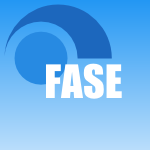 FASE-2006-WestphalT #sequence chart
FASE-2006-WestphalT #sequence chart- The Good, the Bad and the Ugly: Well-Formedness of Live Sequence Charts (BW, TT), pp. 230–246.
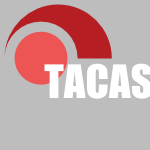 TACAS-2006-GurfinkelC #abstraction #question #why
TACAS-2006-GurfinkelC #abstraction #question #why- Why Waste a Perfectly Good Abstraction? (AG, MC), pp. 212–226.
 CSCW-2006-RiegelsbergerCFP #game studies
CSCW-2006-RiegelsbergerCFP #game studies- Sounds good to me: effects of photo and voice profiles on gaming partner choice (JR, SC, SF, BCP), pp. 159–162.
 ICEIS-SAIC-2006-CampeloS #industrial
ICEIS-SAIC-2006-CampeloS #industrial- The State of E-Business on the German Electronic Consumer Goods Industry (EGC, WS), pp. 69–74.
 ICML-2006-ConitzerG #algorithm #learning #online #problem
ICML-2006-ConitzerG #algorithm #learning #online #problem- Learning algorithms for online principal-agent problems (and selling goods online) (VC, NG), pp. 209–216.
 ICML-2006-Meila
ICML-2006-Meila- The uniqueness of a good optimum for K-means (MM), pp. 625–632.
 KR-2006-BoothMW #how
KR-2006-BoothMW #how- A Bad Day Surfing Is Better than a Good Day Working: How to Revise a Total Preorder (RB, TAM, KSW), pp. 230–238.
 SIGIR-2006-GaoN #case study #modelling #query #statistics
SIGIR-2006-GaoN #case study #modelling #query #statistics- A study of statistical models for query translation: finding a good unit of translation (JG, JYN), pp. 194–201.
 RE-2006-BorgPS #capacity #requirements #scalability
RE-2006-BorgPS #capacity #requirements #scalability- Good Practice and Improvement Model of Handling Capacity Requirements of Large Telecommunication Systems (AB, MP, KS), pp. 240–245.
 SAC-2006-WolfG #development #named #performance
SAC-2006-WolfG #development #named #performance- Good/fast/cheap: contexts, relationships and professional responsibility during software development (MJW, FSG), pp. 261–266.
 ICSE-2006-Grunske #architecture #design #identification #multi #optimisation
ICSE-2006-Grunske #architecture #design #identification #multi #optimisation- Identifying “good” architectural design alternatives with multi-objective optimization strategies (LG), pp. 849–852.
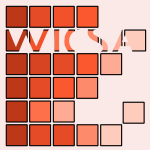 WICSA-2005-Schwanke #architecture #named #process #requirements
WICSA-2005-Schwanke #architecture #named #process #requirements- GEAR: A Good Enough Architectural Requirements Process (RWS), pp. 57–66.
 CASE-2005-DulluriSR #predict
CASE-2005-DulluriSR #predict- Predicting price-tag for customized goods (SD, PS, NRSR), pp. 136–141.
 VLDB-2005-GuoLR #consistency
VLDB-2005-GuoLR #consistency- Caching with “Good Enough” Currency, Consistency, and Completeness (HG, PÅL, RR), pp. 457–468.
 ICML-2005-Niculescu-MizilC #learning #predict
ICML-2005-Niculescu-MizilC #learning #predict- Predicting good probabilities with supervised learning (ANM, RC), pp. 625–632.
 LSO-2005-Fajtak #learning
LSO-2005-Fajtak #learning- Kick-off Workshops and Project Retrospectives: A Good Learning Software Organization Practice (FFF), pp. 112–114.
 SIGIR-2005-AllanCL #information retrieval #question
SIGIR-2005-AllanCL #information retrieval #question- When will information retrieval be “good enough”? (JA, BC, JL), pp. 433–440.
 RE-2005-BerryDFGHW #question #requirements #why
RE-2005-BerryDFGHW #question #requirements #why- To do or not to do: If the requirements engineering payoff is so good, why aren’t more companies doing it? (DMB, DD, AF, DCG, RH, AW), p. 447.
 SPLC-2005-Krueger
SPLC-2005-Krueger- Change is Good. You Go First (CWK), p. 135.
 DAC-2004-RawatJJDGPMHS
DAC-2004-RawatJJDGPMHS- Were the good old days all that good?: EDA then and now (SR, WHJJ, JAD, DG, POP, HDM, CH, JS), p. 543.
 SIGMOD-2004-GuoLRG #consistency #how #sql
SIGMOD-2004-GuoLRG #consistency #how #sql- Relaxed Currency and Consistency: How to Say “Good Enough” in SQL (HG, PÅL, RR, JG), pp. 815–826.
 FoSSaCS-2004-Laird #game studies #semantics
FoSSaCS-2004-Laird #game studies #semantics- A Game Semantics of Local Names and Good Variables (JL), pp. 289–303.
 AdaEurope-2004-ChanCT #random testing #testing
AdaEurope-2004-ChanCT #random testing #testing- Good Random Testing (KPC, TYC, DT), pp. 200–212.
 FSE-2004-SouzaRCMP #api #collaboration #development #how #multi
FSE-2004-SouzaRCMP #api #collaboration #development #how #multi- How a good software practice thwarts collaboration: the multiple roles of APIs in software development (CRBdS, DFR, LTC, DRM, JFP), pp. 221–230.
 FSE-2004-Wolf #question #re-engineering #security
FSE-2004-Wolf #question #re-engineering #security- Is security engineering really just good software engineering? (ALW), p. 1.
 VMCAI-2004-Wilhelm #why
VMCAI-2004-Wilhelm #why- Why AI + ILP Is Good for WCET, but MC Is Not, Nor ILP Alone (RW), pp. 309–322.
 CHI-2003-GutwinS #scalability
CHI-2003-GutwinS #scalability- Fisheyes are good for large steering tasks (CG, AS), pp. 201–208.
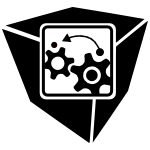 SOFTVIS-2003-Eichelberger #design #diagrams #question
SOFTVIS-2003-Eichelberger #design #diagrams #question- Nice Class Diagrams Admit Good Design? (HE), pp. 159–167.
 ICSE-2003-Shaw #re-engineering #research
ICSE-2003-Shaw #re-engineering #research- Writing Good Software Engineering Research Paper (MS), pp. 726–737.
 SAT-2003-GoldbergN #how #question
SAT-2003-GoldbergN #how #question- How Good Can a Resolution Based SAT-solver Be? (EG, YN), pp. 37–52.
 ICALP-2002-AkcogluDK #performance
ICALP-2002-AkcogluDK #performance- Fast Universalization of Investment Strategies with Provably Good Relative Returns (KA, PD, MYK), pp. 888–900.
 RE-2002-VickersMM #how #question #requirements
RE-2002-VickersMM #how #question #requirements- Requirements Engineering: How Do You Know How Good You Are? (AV, AM, HM), pp. 194–198.
 ICML-2001-JinH #approach #information retrieval #learning #word
ICML-2001-JinH #approach #information retrieval #learning #word- Learning to Select Good Title Words: An New Approach based on Reverse Information Retrieval (RJ, AGH), pp. 242–249.
 KDD-2001-Kohavi #e-commerce #mining
KDD-2001-Kohavi #e-commerce #mining- Mining e-commerce data: the good, the bad, and the ugly (RK), pp. 8–13.
 TOOLS-USA-2001-Thompson #named #question #what
TOOLS-USA-2001-Thompson #named #question #what- SOAP: What Is It and What Is It Good For? (PT), p. 364.
 RE-2001-Hooks #requirements #what
RE-2001-Hooks #requirements #what- What Happens With Good Requirements Practices (IH), p. 268.
 SIGMOD-2000-Gal #data transformation
SIGMOD-2000-Gal #data transformation- Data Management in eCommerce: The Good, the Bad, and the Ugly (AG), p. 578.
 VLDB-2000-RamasamyPNK #set
VLDB-2000-RamasamyPNK #set- Set Containment Joins: The Good, The Bad and The Ugly (KR, JMP, JFN, RK), pp. 351–362.
 ICPR-v2-2000-KunchevaWSD #classification #independence #question
ICPR-v2-2000-KunchevaWSD #classification #independence #question- Is Independence Good For Combining Classifiers? (LIK, CJW, CAS, RPWD), pp. 2168–2171.
 TOOLS-USA-2000-Lauinger00a
TOOLS-USA-2000-Lauinger00a- Good Software under Bad Conditions (TL), pp. 433–434.
 ITiCSE-1999-Utting #education #learning
ITiCSE-1999-Utting #education #learning- Gathering and disseminating good practice at teaching and learning conferences (IU), p. 202.
 HCI-EI-1999-MarcusAFG99b #design #interface
HCI-EI-1999-MarcusAFG99b #design #interface- Good Things in Small Packages: User-Interface Design for Baby Faces in Devices and Appliances for Y2K and Beyond (AM, JA, VF, EG), pp. 715–719.
 HCI-EI-1999-Urokohara #analysis #design #usability #user interface #using
HCI-EI-1999-Urokohara #analysis #design #usability #user interface #using- Method to Build Good Usability: Task Analysis and User Interface Design Using Operation Flowcharts (HU), pp. 928–932.
 ITiCSE-1998-Grove #motivation #process #programming #using
ITiCSE-1998-Grove #motivation #process #programming #using- Using the personal software process to motivate good programming practices (RFG), pp. 98–101.
 ICALP-1998-Lugiez #automaton #induction #proving #theorem proving
ICALP-1998-Lugiez #automaton #induction #proving #theorem proving- A Good Class of Tree Automata and Application to Inductive Theorem Proving (DL), pp. 409–420.
 REFSQ-1998-LamSJ #requirements #set
REFSQ-1998-LamSJ #requirements #set- Managing Requirements Change: A Set of Good Practices (WL, VS, SJ), pp. 85–97.
 SAC-1998-McGuireS #algorithm #linear #search-based #using
SAC-1998-McGuireS #algorithm #linear #search-based #using- Using a genetic algorithm to find good linear error-correcting codes (KMM, RES), pp. 332–337.
 STOC-1997-AlonDMPT #linear #question
STOC-1997-AlonDMPT #linear #question- Is Linear Hashing Good? (NA, MD, PBM, EP, GT), pp. 465–474.
 ECOOP-1997-BrucePF #object-oriented #type system
ECOOP-1997-BrucePF #object-oriented #type system- Subtyping Is Not a Good “Match” for Object-Oriented Languages (KBB, LP, AF), pp. 104–127.
 ECOOP-1997-Nygaard
ECOOP-1997-Nygaard- GOODS to Appear on the Stage (KN), pp. 1–31.
 ITiCSE-1996-KnoxWJKKLMPR #education #guidelines
ITiCSE-1996-KnoxWJKKLMPR #education #guidelines- Use of laboratories in computer science education: guidelines for good practice: report of the working group on computing laboratories (DK, UW, DTJ, EBK, JK, AL, JPM, VKP, KAR), pp. 167–181.
 STOC-1996-Karloff #algorithm #how #question
STOC-1996-Karloff #algorithm #how #question- How Good is the Goemans-Williamson MAX CUT Algorithm? (HJK), pp. 427–434.
 CSCW-1996-HeathL #documentation
CSCW-1996-HeathL #documentation- Documents and Professional Practice: “Bad” Organisational Reasons for “Good” Clinical Records (CH, PL), pp. 354–363.
 POPL-1996-Jim #question #what
POPL-1996-Jim #question #what- What Are Principal Typings and What Are They Good For? (TJ), pp. 42–53.
 DAC-1995-StanionS #synthesis
DAC-1995-StanionS #synthesis- A Method for Finding Good Ashenhurst Decompositions and Its Application to FPGA Synthesis (TS, CS), pp. 60–64.
 STOC-1994-HalldorssonR #approximate #bound #graph #independence #set
STOC-1994-HalldorssonR #approximate #bound #graph #independence #set- Greed is good: approximating independent sets in sparse and bounded-degree graphs (MMH, JR), pp. 439–448.
 SIGMOD-1993-GemisPTB #database #named
SIGMOD-1993-GemisPTB #database #named- GOOD: AGraph-Oriented Object Database System (MG, JP, IT, JVdB), pp. 505–510.
 INTERCHI-1993-Farrand #user interface #visual notation
INTERCHI-1993-Farrand #user interface #visual notation- Common elements in today’s graphical user interfaces: the good, the bad, and the ugly (ABF), pp. 470–473.
 TOOLS-EUROPE-1993-Cox #named #robust
TOOLS-EUROPE-1993-Cox #named #robust- Keynote: Taming the Electronic Frontier: Robust Economics for Information Age Goods (BC), pp. 13–14.
 ICALP-1992-HenzingerMP #question #what
ICALP-1992-HenzingerMP #question #what- What Good Are Digital Clocks? (TAH, ZM, AP), pp. 545–558.
 TRI-Ada-C-1992-Hodges #ada #idea
TRI-Ada-C-1992-Hodges #ada #idea- Ada Program Support Environments: A Good Idea Overcome by Changes (WMH), pp. 439–448.
 ML-1992-SubramanianH #algorithm #design
ML-1992-SubramanianH #algorithm #design- Measuring Utility and the Design of Provably Good EBL Algorithms (DS, SH), pp. 426–425.
 HPDC-1992-NgM #array #maintenance #performance
HPDC-1992-NgM #array #maintenance #performance- Maintaining Good Performance In Disk Arrays During Failure via Uniform Parity Group Distribution (SWN, RLM), pp. 260–269.
 KBSE-1991-FeatherFH #design
KBSE-1991-FeatherFH #design- Composite System Design: The Good News and the Bad News (MSF, SF, BRH), pp. 16–25.
 CHI-1990-GentnerG #interface #why
CHI-1990-GentnerG #interface #why- Why good engineers (sometimes) create bad interfaces (DRG, JG), pp. 277–282.
 ML-1990-SammutC #learning #performance #question
ML-1990-SammutC #learning #performance #question- Is Learning Rate a Good Performance Criterion for Learning? (CS, JC), pp. 170–178.
 CAiSE-1989-Nilsson89a #automation
CAiSE-1989-Nilsson89a #automation- The Good CASE (GN).
 ML-1989-RuffD #question #what
ML-1989-RuffD #question #what- What Good Are Experiments? (RAR, TGD), pp. 109–112.
 OOPSLA-1989-HarrisonSS #development #experience #object-oriented #paradigm #using
OOPSLA-1989-HarrisonSS #development #experience #object-oriented #paradigm #using- Good News, Bad News: Experience Building a Software Development Environment Using the Object-Oriented Paradigm (WHH, JJS, PFS), pp. 85–94.
 SIGMOD-1986-Willard #algorithm #worst-case
SIGMOD-1986-Willard #algorithm #worst-case- Good Worst-Case Algorithms for Inserting and Deleting Records in Dense Sequential Files (DEW), pp. 251–260.
 LICS-1986-HalpernWW
LICS-1986-HalpernWW- Good Rewrite Strategies for FP (JYH, JHW, ELW), pp. 149–162.
 STOC-1985-RaghavanT #array #graph
STOC-1985-RaghavanT #array #graph- Provably Good Routing in Graphs: Regular Arrays (PR, CDT), pp. 79–87.
 ICALP-1985-LubyR #algorithm #behaviour #bidirectional
ICALP-1985-LubyR #algorithm #behaviour #bidirectional- A Bidirectional Shortest-Path Algorithm With Good Average-Case Behavior (Preliminary Version) (ML, PR), pp. 394–403.
 STOC-1984-KahnS #comparison
STOC-1984-KahnS #comparison- Every Poset Has a Good Comparison (JK, MES), pp. 299–301.
 POPL-1984-Halpern #algol #axiom #hoare
POPL-1984-Halpern #algol #axiom #hoare- A Good Hoare Axiom System for an Algol-like Language (JYH), pp. 262–271.
 STOC-1982-Leighton #layout
STOC-1982-Leighton #layout- A Layout Strategy for VLSI which Is Provably Good (Extended Abstract) (FTL), pp. 85–98.
 VLDB-1978-Sharman #metamodelling #question #semantics #what
VLDB-1978-Sharman #metamodelling #question #semantics #what- What is a “Good” Semantic or Meta Model? (GS), p. 138.
 POPL-1977-Clarke #axiom #hoare #programming language
POPL-1977-Clarke #axiom #hoare #programming language- Programming Language Constructs for Which it is Impossible to Obtain “Good” Hoare-Like Axiom Systems (EMC), pp. 10–20.
 CASE-2015-DeviNVKM #algorithm #implementation
CASE-2015-DeviNVKM #algorithm #implementation DocEng-2015-CutterM #documentation #how #mobile #towards
DocEng-2015-CutterM #documentation #how #mobile #towards ICALP-v2-2015-GiannakopoulosK
ICALP-v2-2015-GiannakopoulosK ICALP-v2-2015-KuperbergS #automaton #nondeterminism #on the
ICALP-v2-2015-KuperbergS #automaton #nondeterminism #on the CHI-2015-KayPK #bibliography #classification #evaluation #how
CHI-2015-KayPK #bibliography #classification #evaluation #how CHI-2015-PritchardVO
CHI-2015-PritchardVO CHI-2015-SkovJSL #monitoring
CHI-2015-SkovJSL #monitoring CSCW-2015-KumarS #facebook #privacy #women
CSCW-2015-KumarS #facebook #privacy #women CSCW-2015-LiZLDG #collaboration #editing #trade-off #wiki
CSCW-2015-LiZLDG #collaboration #editing #trade-off #wiki LCT-2015-KobanLO #game studies #video
LCT-2015-KobanLO #game studies #video ICEIS-v1-2015-JuniorS #approach #compilation #optimisation #reasoning #set
ICEIS-v1-2015-JuniorS #approach #compilation #optimisation #reasoning #set ICML-2015-WuGS #combinator #feedback #finite #identification #on the
ICML-2015-WuGS #combinator #feedback #finite #identification #on the KDD-2015-HohnholdOT
KDD-2015-HohnholdOT RecSys-2015-LarrainTPGN #case study #collaboration #social
RecSys-2015-LarrainTPGN #case study #collaboration #social ECOOP-2015-PradelS #empirical #javascript
ECOOP-2015-PradelS #empirical #javascript ICSE-v1-2015-LavalleeR #case study #developer #quality #why
ICSE-v1-2015-LavalleeR #case study #developer #quality #why ASPLOS-2015-SridharanDBFSSG #fault #memory management
ASPLOS-2015-SridharanDBFSSG #fault #memory management CAV-2015-GouwRBBH #java
CAV-2015-GouwRBBH #java LICS-2015-CarayolS #game studies #how #question
LICS-2015-CarayolS #game studies #how #question DATE-2014-ShiC #named
DATE-2014-ShiC #named SIGMOD-2014-ParchasGPB #graph #nondeterminism
SIGMOD-2014-ParchasGPB #graph #nondeterminism PLDI-2014-Palem #question #what
PLDI-2014-Palem #question #what LATA-2014-KleinMBK #automaton #model checking #probability #question
LATA-2014-KleinMBK #automaton #model checking #probability #question CHI-2014-AhmaniemiKH #gesture #question #what
CHI-2014-AhmaniemiKH #gesture #question #what CHI-2014-Wohn #game studies #online #social
CHI-2014-Wohn #game studies #online #social HCI-AS-2014-LandyLNPLM #analysis #comparative #development #predict
HCI-AS-2014-LandyLNPLM #analysis #comparative #development #predict HIMI-DE-2014-ShiozuKYS #question
HIMI-DE-2014-ShiozuKYS #question KDD-2014-Eagle #big data #social
KDD-2014-Eagle #big data #social KDD-2014-PapalexakisFSTMF #algorithm #challenge #multi
KDD-2014-PapalexakisFSTMF #algorithm #challenge #multi KDD-2014-RamakrishnanW #privacy #question #social
KDD-2014-RamakrishnanW #privacy #question #social KDD-2014-XuWCGSKDL #data mining #mining #network #social
KDD-2014-XuWCGSKDL #data mining #mining #network #social KDIR-2014-SuciuICDP #learning #word
KDIR-2014-SuciuICDP #learning #word KDIR-2014-SzejdaSC #question #wiki
KDIR-2014-SzejdaSC #question #wiki SIGIR-2014-ArkhipovaG #mobile #performance #web
SIGIR-2014-ArkhipovaG #mobile #performance #web PPoPP-2014-AgrawalFSSU #data type #parallel #scheduling #source code
PPoPP-2014-AgrawalFSSU #data type #parallel #scheduling #source code ICTSS-2014-Deak #bibliography #testing #what
ICTSS-2014-Deak #bibliography #testing #what ASE-2013-VeerappaH #approach #maturity #requirements
ASE-2013-VeerappaH #approach #maturity #requirements ICSM-2013-Yamashita #case study #comparative #how #maintenance #smell
ICSM-2013-Yamashita #case study #comparative #how #maintenance #smell ICEIS-v2-2013-OBrienSH #framework #quality
ICEIS-v2-2013-OBrienSH #framework #quality KDD-2013-Ghani #scalability #social
KDD-2013-Ghani #scalability #social RE-2013-Gorschek #requirements
RE-2013-Gorschek #requirements ESEC-FSE-2013-Terekhov
ESEC-FSE-2013-Terekhov ICSE-2013-PolikarpovaF0WM #question #specification #what
ICSE-2013-PolikarpovaF0WM #question #specification #what SLE-2013-BaggeH #pipes and filters #pretty-printing
SLE-2013-BaggeH #pipes and filters #pretty-printing DAC-2012-Gester0NPSV #algorithm #data type #performance
DAC-2012-Gester0NPSV #algorithm #data type #performance DAC-2012-Rinard #reasoning
DAC-2012-Rinard #reasoning FoSSaCS-2012-PetersN #encoding #question
FoSSaCS-2012-PetersN #encoding #question ICSM-2012-NasehiSMB #case study #programming #stack overflow #what
ICSM-2012-NasehiSMB #case study #programming #stack overflow #what STOC-2012-KaufmanL #graph #symmetry #transitive
STOC-2012-KaufmanL #graph #symmetry #transitive CHI-2012-KleekSSs #game studies #named #twitter
CHI-2012-KleekSSs #game studies #named #twitter ECIR-2012-NeumayerBN12a #effectiveness #semantics
ECIR-2012-NeumayerBN12a #effectiveness #semantics KDD-2012-GleichS #community
KDD-2012-GleichS #community HPDC-2012-Budiu #artificial reality #big data #framework
HPDC-2012-Budiu #artificial reality #big data #framework QoSA-ISARCS-2011-Stal #architecture
QoSA-ISARCS-2011-Stal #architecture ITiCSE-2011-Connolly11a #component #education #social
ITiCSE-2011-Connolly11a #component #education #social ITiCSE-2011-Goldweber11a #learning #social
ITiCSE-2011-Goldweber11a #learning #social ICSM-2011-OssherSL #java #open source
ICSM-2011-OssherSL #java #open source CHI-2011-Fallman #human-computer #interactive
CHI-2011-Fallman #human-computer #interactive CIKM-2011-ElsayedLM #approximate #performance #retrieval
CIKM-2011-ElsayedLM #approximate #performance #retrieval CIKM-2011-LoumakisSG #image #smell
CIKM-2011-LoumakisSG #image #smell KMIS-2011-Grim-YefsahRT #information management #outsourcing
KMIS-2011-Grim-YefsahRT #information management #outsourcing SAC-2011-MajchrzakH #game studies
SAC-2011-MajchrzakH #game studies LICS-2011-MurawskiT #game studies #semantics
LICS-2011-MurawskiT #game studies #semantics ECSA-2010-Kruchten #architecture #question
ECSA-2010-Kruchten #architecture #question QoSA-2010-GloahecFS #architecture
QoSA-2010-GloahecFS #architecture HT-2010-KleinSN #question
HT-2010-KleinSN #question SCAM-2010-KesterMB #concurrent #debugging #how #question #static analysis
SCAM-2010-KesterMB #concurrent #debugging #how #question #static analysis ICPR-2010-GuoC10a #constraints
ICPR-2010-GuoC10a #constraints ICPR-2010-WuBT #image #predict
ICPR-2010-WuBT #image #predict SEKE-2010-TibermacineSGFS #automation #evolution #towards
SEKE-2010-TibermacineSGFS #automation #evolution #towards SIGIR-2010-BuscherDC #quality #random #web
SIGIR-2010-BuscherDC #quality #random #web SIGIR-2010-SvoreKK #how #proximity #retrieval #web
SIGIR-2010-SvoreKK #how #proximity #retrieval #web ECMFA-2010-Corcoran #case study #development #experience #modelling #scalability
ECMFA-2010-Corcoran #case study #development #experience #modelling #scalability OOPSLA-2010-QuillienW #agile
OOPSLA-2010-QuillienW #agile DAC-2009-FengZYTZ #algorithm #performance
DAC-2009-FengZYTZ #algorithm #performance SIGMOD-2009-LiuJ #named
SIGMOD-2009-LiuJ #named HCI-NT-2009-LeeLS #design
HCI-NT-2009-LeeLS #design HCI-NT-2009-LiuUC #3d #classification #interface
HCI-NT-2009-LiuUC #3d #classification #interface OCSC-2009-CindioP #community #online #question
OCSC-2009-CindioP #community #online #question CIKM-2009-HeO #documentation #feedback
CIKM-2009-HeO #documentation #feedback ICML-2009-DekelS #education
ICML-2009-DekelS #education SEKE-2009-ChangL #design
SEKE-2009-ChangL #design SIGIR-2009-LiHT #internet #mobile
SIGIR-2009-LiHT #internet #mobile OOPSLA-2009-Mullen #design #people
OOPSLA-2009-Mullen #design #people SAT-2009-CreignouDER #comprehension
SAT-2009-CreignouDER #comprehension ASE-2008-Eltaher #approach #testing #towards
ASE-2008-Eltaher #approach #testing #towards CAiSE-2008-VanderfeestenRMAC #metric #modelling #on the #process
CAiSE-2008-VanderfeestenRMAC #metric #modelling #on the #process ECIR-2008-Mizzaro #evaluation #information retrieval #question
ECIR-2008-Mizzaro #evaluation #information retrieval #question SIGIR-2008-Al-MaskariSCA #effectiveness #predict #question
SIGIR-2008-Al-MaskariSCA #effectiveness #predict #question SIGIR-2008-CaoNGR #feedback #pseudo
SIGIR-2008-CaoNGR #feedback #pseudo SIGIR-2008-SmithK #adaptation
SIGIR-2008-SmithK #adaptation SAC-2008-BazzanSDB #contest #game studies
SAC-2008-BazzanSDB #contest #game studies SAC-2008-FariaM #recognition #scalability #speech
SAC-2008-FariaM #recognition #scalability #speech FSE-2008-BettenburgJSWPZ #debugging #question #what
FSE-2008-BettenburgJSWPZ #debugging #question #what DAC-2007-LiuLC #algorithm #approximate #multi #optimisation #using
DAC-2007-LiuLC #algorithm #approximate #multi #optimisation #using CSEET-2007-WilliamsL #question #why
CSEET-2007-WilliamsL #question #why STOC-2007-AsadpourS #algorithm #approximate
STOC-2007-AsadpourS #algorithm #approximate HCI-AS-2007-HarrisonP #design #experience #usability #web
HCI-AS-2007-HarrisonP #design #experience #usability #web HIMI-IIE-2007-KusukawaMA #e-commerce
HIMI-IIE-2007-KusukawaMA #e-commerce CIKM-2007-ButtcherC #random
CIKM-2007-ButtcherC #random POPL-2007-CookGPRV #proving #source code
POPL-2007-CookGPRV #proving #source code ESEC-FSE-2007-PatelBS #capacity #case study #using
ESEC-FSE-2007-PatelBS #capacity #case study #using ICSE-2007-DuimAS #education #re-engineering
ICSE-2007-DuimAS #education #re-engineering ICSE-2007-MartinRRS #testing
ICSE-2007-MartinRRS #testing CGO-2007-CavazosFABOT #compilation #optimisation #performance #using
CGO-2007-CavazosFABOT #compilation #optimisation #performance #using DAC-2006-Josephson #debugging
DAC-2006-Josephson #debugging CSEET-2006-HayesDHSD #question
CSEET-2006-HayesDHSD #question FASE-2006-WestphalT #sequence chart
FASE-2006-WestphalT #sequence chart TACAS-2006-GurfinkelC #abstraction #question #why
TACAS-2006-GurfinkelC #abstraction #question #why CSCW-2006-RiegelsbergerCFP #game studies
CSCW-2006-RiegelsbergerCFP #game studies ICEIS-SAIC-2006-CampeloS #industrial
ICEIS-SAIC-2006-CampeloS #industrial ICML-2006-ConitzerG #algorithm #learning #online #problem
ICML-2006-ConitzerG #algorithm #learning #online #problem ICML-2006-Meila
ICML-2006-Meila KR-2006-BoothMW #how
KR-2006-BoothMW #how SIGIR-2006-GaoN #case study #modelling #query #statistics
SIGIR-2006-GaoN #case study #modelling #query #statistics RE-2006-BorgPS #capacity #requirements #scalability
RE-2006-BorgPS #capacity #requirements #scalability SAC-2006-WolfG #development #named #performance
SAC-2006-WolfG #development #named #performance ICSE-2006-Grunske #architecture #design #identification #multi #optimisation
ICSE-2006-Grunske #architecture #design #identification #multi #optimisation WICSA-2005-Schwanke #architecture #named #process #requirements
WICSA-2005-Schwanke #architecture #named #process #requirements CASE-2005-DulluriSR #predict
CASE-2005-DulluriSR #predict VLDB-2005-GuoLR #consistency
VLDB-2005-GuoLR #consistency ICML-2005-Niculescu-MizilC #learning #predict
ICML-2005-Niculescu-MizilC #learning #predict LSO-2005-Fajtak #learning
LSO-2005-Fajtak #learning SIGIR-2005-AllanCL #information retrieval #question
SIGIR-2005-AllanCL #information retrieval #question RE-2005-BerryDFGHW #question #requirements #why
RE-2005-BerryDFGHW #question #requirements #why SPLC-2005-Krueger
SPLC-2005-Krueger DAC-2004-RawatJJDGPMHS
DAC-2004-RawatJJDGPMHS SIGMOD-2004-GuoLRG #consistency #how #sql
SIGMOD-2004-GuoLRG #consistency #how #sql FoSSaCS-2004-Laird #game studies #semantics
FoSSaCS-2004-Laird #game studies #semantics AdaEurope-2004-ChanCT #random testing #testing
AdaEurope-2004-ChanCT #random testing #testing FSE-2004-SouzaRCMP #api #collaboration #development #how #multi
FSE-2004-SouzaRCMP #api #collaboration #development #how #multi FSE-2004-Wolf #question #re-engineering #security
FSE-2004-Wolf #question #re-engineering #security VMCAI-2004-Wilhelm #why
VMCAI-2004-Wilhelm #why CHI-2003-GutwinS #scalability
CHI-2003-GutwinS #scalability SOFTVIS-2003-Eichelberger #design #diagrams #question
SOFTVIS-2003-Eichelberger #design #diagrams #question ICSE-2003-Shaw #re-engineering #research
ICSE-2003-Shaw #re-engineering #research SAT-2003-GoldbergN #how #question
SAT-2003-GoldbergN #how #question ICALP-2002-AkcogluDK #performance
ICALP-2002-AkcogluDK #performance RE-2002-VickersMM #how #question #requirements
RE-2002-VickersMM #how #question #requirements ICML-2001-JinH #approach #information retrieval #learning #word
ICML-2001-JinH #approach #information retrieval #learning #word KDD-2001-Kohavi #e-commerce #mining
KDD-2001-Kohavi #e-commerce #mining TOOLS-USA-2001-Thompson #named #question #what
TOOLS-USA-2001-Thompson #named #question #what RE-2001-Hooks #requirements #what
RE-2001-Hooks #requirements #what SIGMOD-2000-Gal #data transformation
SIGMOD-2000-Gal #data transformation VLDB-2000-RamasamyPNK #set
VLDB-2000-RamasamyPNK #set ICPR-v2-2000-KunchevaWSD #classification #independence #question
ICPR-v2-2000-KunchevaWSD #classification #independence #question TOOLS-USA-2000-Lauinger00a
TOOLS-USA-2000-Lauinger00a ITiCSE-1999-Utting #education #learning
ITiCSE-1999-Utting #education #learning HCI-EI-1999-MarcusAFG99b #design #interface
HCI-EI-1999-MarcusAFG99b #design #interface HCI-EI-1999-Urokohara #analysis #design #usability #user interface #using
HCI-EI-1999-Urokohara #analysis #design #usability #user interface #using ITiCSE-1998-Grove #motivation #process #programming #using
ITiCSE-1998-Grove #motivation #process #programming #using ICALP-1998-Lugiez #automaton #induction #proving #theorem proving
ICALP-1998-Lugiez #automaton #induction #proving #theorem proving REFSQ-1998-LamSJ #requirements #set
REFSQ-1998-LamSJ #requirements #set SAC-1998-McGuireS #algorithm #linear #search-based #using
SAC-1998-McGuireS #algorithm #linear #search-based #using STOC-1997-AlonDMPT #linear #question
STOC-1997-AlonDMPT #linear #question ECOOP-1997-BrucePF #object-oriented #type system
ECOOP-1997-BrucePF #object-oriented #type system ECOOP-1997-Nygaard
ECOOP-1997-Nygaard ITiCSE-1996-KnoxWJKKLMPR #education #guidelines
ITiCSE-1996-KnoxWJKKLMPR #education #guidelines STOC-1996-Karloff #algorithm #how #question
STOC-1996-Karloff #algorithm #how #question CSCW-1996-HeathL #documentation
CSCW-1996-HeathL #documentation POPL-1996-Jim #question #what
POPL-1996-Jim #question #what DAC-1995-StanionS #synthesis
DAC-1995-StanionS #synthesis STOC-1994-HalldorssonR #approximate #bound #graph #independence #set
STOC-1994-HalldorssonR #approximate #bound #graph #independence #set SIGMOD-1993-GemisPTB #database #named
SIGMOD-1993-GemisPTB #database #named INTERCHI-1993-Farrand #user interface #visual notation
INTERCHI-1993-Farrand #user interface #visual notation TOOLS-EUROPE-1993-Cox #named #robust
TOOLS-EUROPE-1993-Cox #named #robust ICALP-1992-HenzingerMP #question #what
ICALP-1992-HenzingerMP #question #what TRI-Ada-C-1992-Hodges #ada #idea
TRI-Ada-C-1992-Hodges #ada #idea ML-1992-SubramanianH #algorithm #design
ML-1992-SubramanianH #algorithm #design HPDC-1992-NgM #array #maintenance #performance
HPDC-1992-NgM #array #maintenance #performance KBSE-1991-FeatherFH #design
KBSE-1991-FeatherFH #design CHI-1990-GentnerG #interface #why
CHI-1990-GentnerG #interface #why ML-1990-SammutC #learning #performance #question
ML-1990-SammutC #learning #performance #question CAiSE-1989-Nilsson89a #automation
CAiSE-1989-Nilsson89a #automation ML-1989-RuffD #question #what
ML-1989-RuffD #question #what OOPSLA-1989-HarrisonSS #development #experience #object-oriented #paradigm #using
OOPSLA-1989-HarrisonSS #development #experience #object-oriented #paradigm #using SIGMOD-1986-Willard #algorithm #worst-case
SIGMOD-1986-Willard #algorithm #worst-case LICS-1986-HalpernWW
LICS-1986-HalpernWW STOC-1985-RaghavanT #array #graph
STOC-1985-RaghavanT #array #graph ICALP-1985-LubyR #algorithm #behaviour #bidirectional
ICALP-1985-LubyR #algorithm #behaviour #bidirectional STOC-1984-KahnS #comparison
STOC-1984-KahnS #comparison POPL-1984-Halpern #algol #axiom #hoare
POPL-1984-Halpern #algol #axiom #hoare STOC-1982-Leighton #layout
STOC-1982-Leighton #layout VLDB-1978-Sharman #metamodelling #question #semantics #what
VLDB-1978-Sharman #metamodelling #question #semantics #what POPL-1977-Clarke #axiom #hoare #programming language
POPL-1977-Clarke #axiom #hoare #programming language









